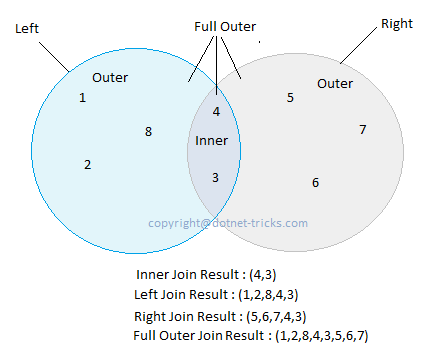

To find the numbers of tracks for the album with id 1, we add a HAVING clause to the following statement: SELECT
#Sqlite inner join example code#
To find the number of tracks for each album, you use GROUP BY clause as follows: SELECTĪlbumid Code language: SQL (Structured Query Language) ( sql ) We will use the tracks table in the sample database for demonstration. It only includes a group in the final result set if the evaluation is true.

In this syntax, the HAVING clause evaluates the search_condition for each group as a Boolean expression. Search_condition Code language: SQL (Structured Query Language) ( sql ) The following illustrates the syntax of the HAVING clause: SELECT Note that the HAVING clause is applied after GROUP BY clause, whereas the WHERE clause is applied before the GROUP BY clause. If you use the HAVING clause, you must include the GROUP BY clause otherwise, you will get the following error: Error: a GROUP BY clause is required before HAVING Code language: JavaScript ( javascript ) Then the HAVING clause filters groups based on a specified condition. The GROUP BY clause groups a set of rows into a set of summary rows or groups. You often use the HAVING clause with the GROUP BY clause. The HAVING clause specifies a search condition for a group. SQLite HAVING clause is an optional clause of the SELECT statement.
#Sqlite inner join example how to#
The column names can be different as long as they have common data.Summary: in this tutorial, you will learn how to use SQLite HAVING clause to specify a filter condition for a group or an aggregate. Note: For this command to run, there must be a customer_id column in each individual table. The command returns those rows where there is a match between column values in both join conditions. and joins Customers and Shippingss tables based on customer_id (from the Customers table) and customer (from the Shippings table).joins Customers and Orders tables based on customer_id (from the Customers table) and customer (from the Orders table).SELECT C.customer_id, C.first_name, O.amount, S.status join three tables: Customers, Orders, and Shippings We can also join more than two tables using INNER JOIN. Here, the SQL command performs an inner join on the Categories and Products tables while assigning the aliases C and P to them, respectively. We can use AS aliases inside INNER JOIN to make our query short and clean. Here, the SQL command joins two tables and selects rows where the amount is greater than or equal to 500. ON Customers.customer_id = Orders.customer join Customers and Orders table with matching fields customer_id and customer Here's an example of INNER JOIN with the WHERE clause:

The result set has the cat_name column from Categories and the prod_title column from Products. Here, the SQL command selects common rows between Categories and Products tables with the matching field cat_id. SELECT Categories.cat_name, Products.prod_title Let's look at another example, - join Categories and Products tables with their matching fields cat_id Here, the SQL command selects rows from both tables if the values of customer_id (of the Customers table) and customer (of the Orders table) are a match. SELECT Customers.customer_id, Customers.first_name, Orders.amount join the Customers and Orders tables with matching fields customer_id and customer Basically, these two clauses are the same. Note: We can also use JOIN instead of INNER JOIN. INNER JOIN excludes all the rows that are not common between two tables. column1 is the column in table1 that is related to column2 in table2.table1 and table2 are the two tables that are to be joined.The syntax of the SQL INNER JOIN statement is: SELECT columns_from_both_tables It then filters the customer_id column of the Customers table and the item column of the Orders table into the result set. Here, the SQL query performs an INNER JOIN operation by joining the Customers and Orders tables.

join Customers and Orders tables with their matching fields customer_id The SQL INNER JOIN command joins two tables based on a common column and selects rows that have matching values in these columns.


 0 kommentar(er)
0 kommentar(er)
